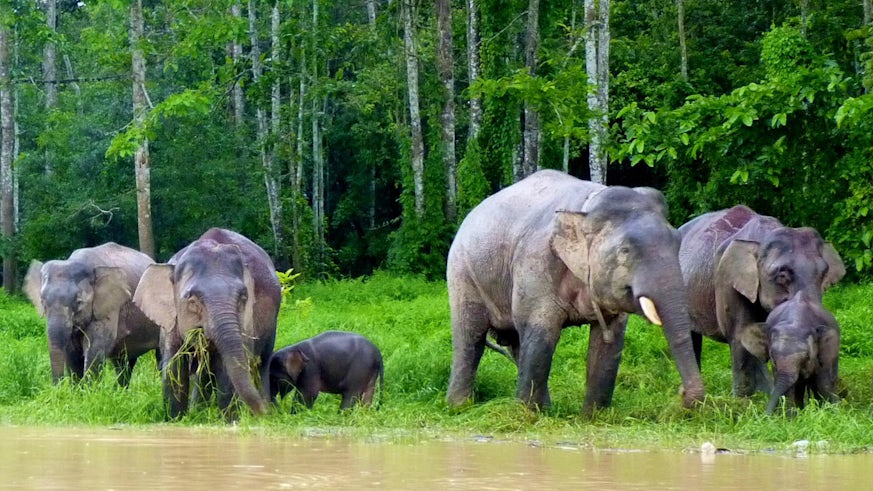Restoring tropical rainforests
7 August 2017

Abandoned oil palm plantations can regenerate forest canopy to levels often found in primary forest, providing a means to protect important wildlife habitats that are under threat from forest decline.
A team of researchers, including Cardiff University researchers at the Danau Girang Field Centre in Borneo, found that abandoned plantations could regenerate in as little as 17 years, helping to reconnect isolated patches of forest where the movement of plants and animals has become inhibited, restricting breeding and biodiversity.
“Our study indicates that natural reclamation of underproductive agricultural lands can provide a cost-effective pathway for the reestablishment of habitat connectivity,” remarked first author Luke Evans, a postdoctoral researcher at the Carnegie Institution for Science and with Danau Girang Field Centre.
A valuable pathway
The researchers also report that natural forest regrowth can provide usable habitat for the endangered Bornean elephant. “In a time of rapidly dwindling forest cover due to oil palm plantation expansion, any return of less productive land to forest is turning out to be important. Our study shows that forest recovery is a valuable pathway to generating critical habitat for elephants and other endangered fauna.” said co-author Greg Asner, of the Carnegie Institution for Science.

Using airborne laser imaging of the forest from the Carnegie Airborne Observatory, the study quantified the scale of habitat regeneration by examining canopy coverage, tree heights and carbon storage. These factors were used to assess overall habitat quality and suitability for wildlife.
The findings have important implications for ongoing efforts by the Sabah Forestry Department to put more forest under protection in the Malaysian Bornean state of Sabah.
Dr Benoit Goossens, Director of Danau Girang Field Centre and Reader at Cardiff University’s School of Biosciences, said “We hope that this study will help to convince plantation owners to aid us in our efforts to restore lowland forest connectivity in Sabah. This can be achieved at minimal cost to land owners whilst dramatically aiding public relations.”
The new study ‘Underproductive agriculture aids connectivity in tropical forests’ is published in the journal Forest Ecology and Management.


